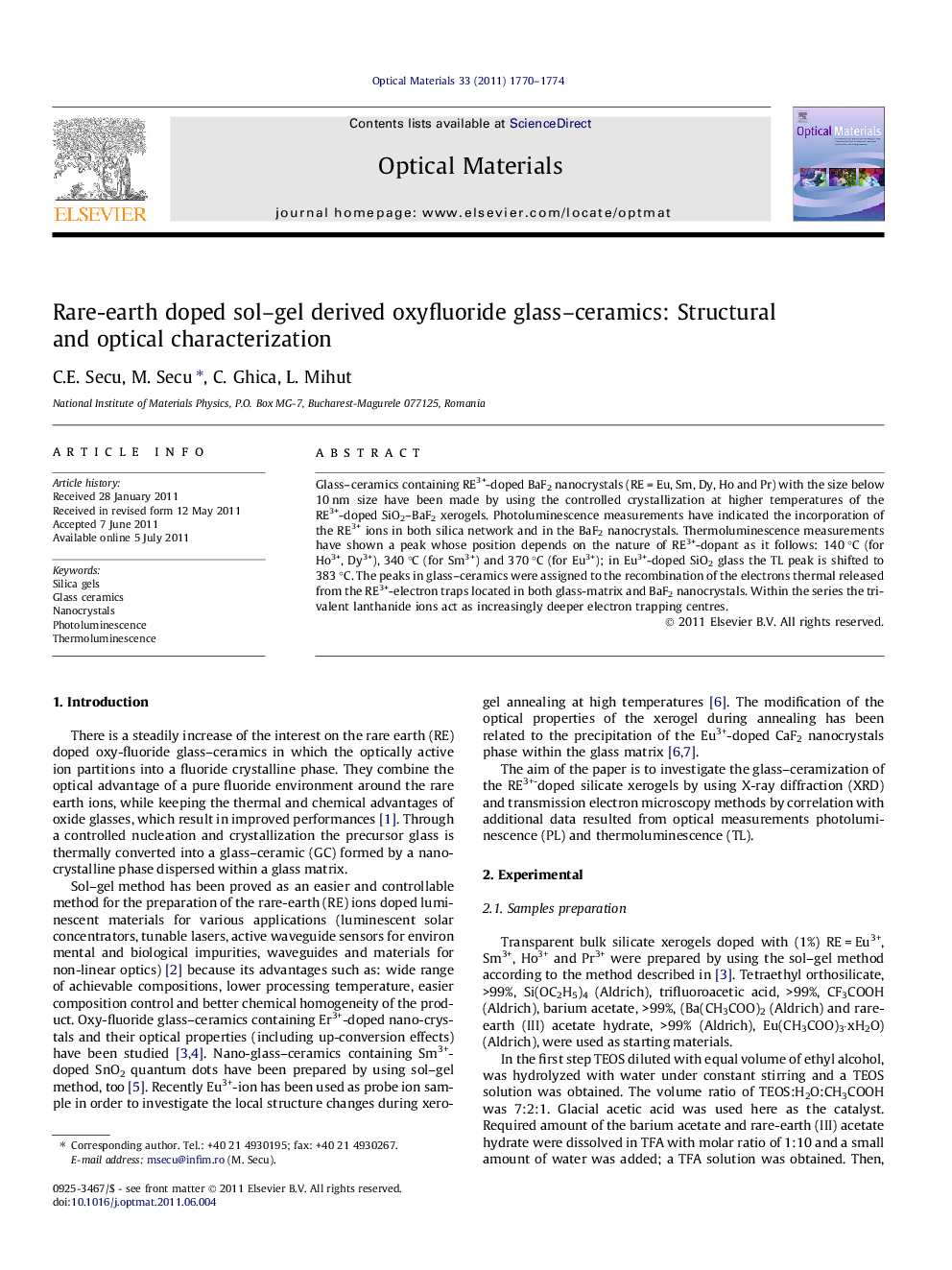| کد مقاله | کد نشریه | سال انتشار | مقاله انگلیسی | نسخه تمام متن |
|---|---|---|---|---|
| 1495316 | 992932 | 2011 | 5 صفحه PDF | دانلود رایگان |

Glass–ceramics containing RE3+-doped BaF2 nanocrystals (RE = Eu, Sm, Dy, Ho and Pr) with the size below 10 nm size have been made by using the controlled crystallization at higher temperatures of the RE3+-doped SiO2–BaF2 xerogels. Photoluminescence measurements have indicated the incorporation of the RE3+ ions in both silica network and in the BaF2 nanocrystals. Thermoluminescence measurements have shown a peak whose position depends on the nature of RE3+-dopant as it follows: 140 °C (for Ho3+, Dy3+), 340 °C (for Sm3+) and 370 °C (for Eu3+); in Eu3+-doped SiO2 glass the TL peak is shifted to 383 °C. The peaks in glass–ceramics were assigned to the recombination of the electrons thermal released from the RE3+-electron traps located in both glass-matrix and BaF2 nanocrystals. Within the series the trivalent lanthanide ions act as increasingly deeper electron trapping centres.
Figure optionsDownload high-quality image (172 K)Download as PowerPoint slideHighlights
► Annealing of the rare-earth doped SiO2–BaF2 xerogel induces the crystallization of BaF2 nanocrystals.
► Rare-earth ions are embedded in the glass and in the BaF2 nanocrystals.
► Recombination of rare-earth related electron traps gives rise to thermoluminescence.
► Within the series the trivalent lanthanide ions act as increasingly deeper electron trapping centres.
Journal: Optical Materials - Volume 33, Issue 11, September 2011, Pages 1770–1774